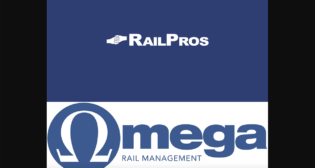
For Small Roads, Two New Safety Training Programs
Written by Marybeth Luczak, Executive EditorThe Short Line Safety Institute (SLSI) is helping small roads prepare employees to safely respond to hazardous materials incidents, and the Iowa Northern Railway is leveraging a CRISI grant to provide safety training across the industry.
SLSI will develop a Transportation Emergency Response Plan (TERP) for hazmat-hauling short lines and regionals, which can also be shared with local first responders in advance of an emergency.
The plan, provided at no cost, includes detailed high-resolution maps identifying physical features of rail yards and key asset locations for incident response, and emergency access routes within the rail facility, according to SLSI. Also included: contact information for key rail personnel as well as the locations of sensitive receptors—such as hospitals, schools and convalescent facilities whose occupants are more susceptible to the adverse effects of chemical/pollutant exposure—within a one-mile radius of rail yards (see example below).
There are three steps to completing a TERP: an initial phone call for background information and rail yard layout details; a site survey by SLSI; and a review of the final plan and its delivery, in electronic and hard-copy formats.
When on-site, SLSI staff will follow the Centers for Disease Control and Prevention’s and Federal Railroad Administration’s COVID 19 guidelines as well as any railroad-specific or local health and safety measures.
“Analysis of Safety Culture Assessments conducted by SLSI over the past five years has identified the need for incremental training and support for small-business railroads that handle hazardous materials,” SLSI Executive Director Tom Murta said. “Offering the development and creation of a TERP is an outgrowth of our Hazardous Materials Training.”
IANR CRISI Grant
In a related railroad-safety development, Class III Iowa Northern Railway Co. (IANR), with funds from a $6.7 million FRA CRISI (Consolidated Rail Infrastructure and Safety Improvements) Program grant, is finalizing development of a comprehensive, computer-based safety education and training program for short line railroads. The program will be available virtually through an LMS (Learning Management System) as well as in-person through training courses offered at IANR’s Waterloo, Iowa, Training Center, at a small railroad’s location, or at another remote location.
The courses, which ASLRRA said “will be made available to short line railroads with the goal of enhancing the safety of railroad operations across the industry,” will focus on compliance with FRA safety and operating regulations as well as industry best practices, and will cover areas such as 49 CFR Part 243 training, leadership and development, operating rules, and mechanical and m/w training. Locomotive simulator training will also be available to short line railroads at IANR’s’ s training center or delivered directly at individual railroad locations via a mobile simulator and classroom trailer.
Final program delivery and outcomes, ASLRRA noted, are focused on three objectives:
- Improving railroad safety and compliance with FRA regulations.
- Enhancing and expanding work force development.
- Boosting the efficiency of rail operations.
“We are excited to begin this project in earnest, following more than a year of preparation, working with ASLRRA and our short line industry peers,” said IANR President Dan Sabin. “Class III railroads are challenged to provide financial resources, expertise and personnel to undertake education and training of their workforces, and their rural locations can make it difficult to travel to education. Additionally, our railroaders wear many hats, making a ‘one size fits all’ education program nearly impossible. The grant will enable a wide variety of critical safety training to be made available for all small-business railroads, either in-person or virtually. We firmly believe that this program has the potential to have a wide and lasting positive safety impact on our industry.”
“We anticipate that this training will be very favorably received by our more than 500 railroad members,” said ASLRRA President Chuck Baker. “Flexibility of multiple course delivery formats will allow railroad employees access to professional and compliant training programs while eliminating the company cost burden including travel costs and lost productivity when key personnel leave the workplace for extended training time.”
ASLRRA will be providing staff, training and administration expertise to the IANR during program development. Rollout is expected to begin in summer 2021.



